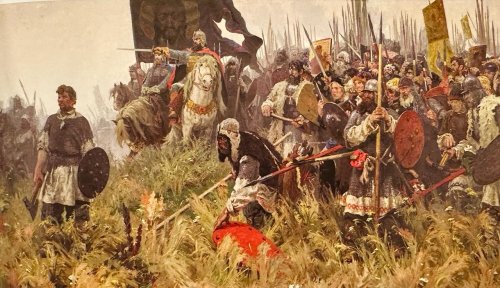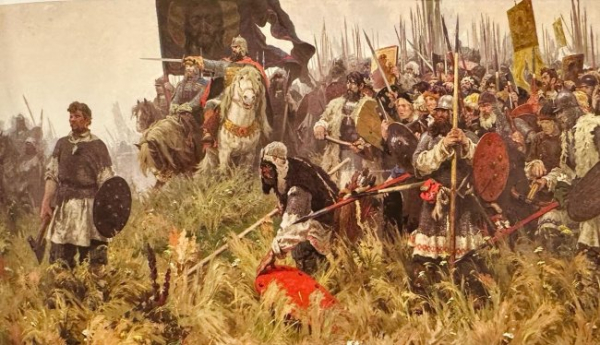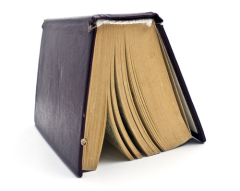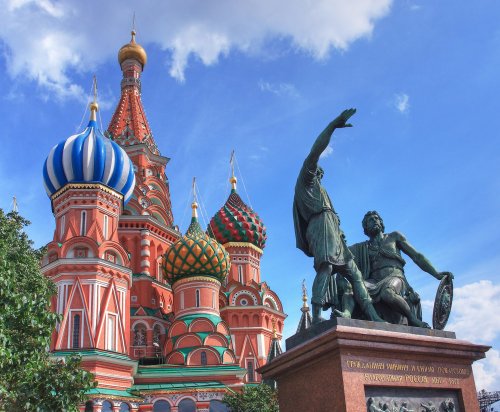
The Battle of Kulikovo in 1380 was an important event of the second half of the 14th century. Mountains of popular literature have been written about it, but nevertheless, this battle is the least studied fact in our historical science. To this day, there is not a single monograph, not a single work containing a critical analysis of the sources and scientific analysis of the events that preceded it, and the Battle of Kulikovo itself. Why did this happen?
To answer this question, let's look at what assessments and judgments about the Battle of Kulikovo were common in different periods of our history.
The first work that reflected the events of the battle was, as they say, “Zadonshchina” – a poetic work, possibly created in the wake of the events. “Zadonshchina” does not contain an exact account of the events. The work contains elements of fiction and exaggeration.
The oldest account of the battle is preserved in a collection called the Rogozhsky Chronicler (1540s) and in the Simeon Chronicle (second quarter of the 15th century). That is, the chroniclers draw their information from a literary work, although in life the opposite process usually occurs.
The battle's evaluation here does not rise to the level of all-Russian significance. The reason for the modest place that the early chronicles give to the Battle of Kulikovo is obvious: the main political centers of Rus' – Tver, Ryazan, Veliky Novgorod, Nizhny Novgorod – had not yet completely lost their independence from Moscow. They did not participate in the Battle of Kulikovo, which for them was only an affair of the Moscow principality, and the Moscow chroniclers were still embarrassed to lie to the skies – after all, there was still someone to catch them out.
The reassessment of the events of the Battle of Kulikovo began only in the middle of the 15th century, during the formation of the Russian state with its center in Moscow. The Battle of Kulikovo became a victory for the all-Russian forces. It was then, a hundred years later, that the Moscow Code of 1479 first (?) mentioned an alliance between Mamai and the Lithuanian prince Jagiello, and the apostasy of the Ryazan prince Oleg was especially vividly shown.
The vicious abuse directed at the Ryazan prince who lived a hundred years ago is in fact addressed to his descendants – the great princes of Ryazan, the last independent rulers in Rus' who had not yet submitted to Moscow.
Now, a hundred years later, many of the smallest details of the battle and its course are emerging.
The most famous work about the Battle of Kulikovo was the Tale of the Battle of Mamai, which took its final form no earlier than the second half of the 15th century. Only in the Tale are there colorful, but not entirely reliable stories about the meetings of Dmitry Ivanovich with Sergius of Radonezh. The Tale was created as a propaganda document in connection with the events of 1480, containing clear emphasis on the connection between Ivan III's campaign against Akhmat, perhaps Akhmet, and Dmitry Donskoy's campaign against Mamai. The main meaning of the Tale is the historical continuity of the deeds of the Moscow sovereigns. According to the Tale, Dmitry Donskoy began to be called the sovereign of all Rus' after the battle. This could not have happened during Dmitry's time.
Thus, the Tale and Zadonshchina are the national epic of the victorious Grand Duchy of Moscow, in a sense similar to, say, the Iliad.
Now let's look at the question of where the Battle of Kulikovo took place. The answer is not as simple as it seems at first glance. “On Kulikovo Field,” you will say. It's not that simple.
In the early 1820s, the authorities and the public wanted to erect a monument on the site of the Battle of Kulikovo. But the Kulikovo Field was very large, and finding the site of the famous battle was quite problematic. The main evidence of the battle, of course, would be the discovery of the burials of Dmitry Donskoy's fallen soldiers. But there were problems with them and the remains of weapons: they did not want to be found. Although in history, if there was a battle somewhere, then material evidence of the battle is usually always found.
But once the authorities said that the Battle of Kulikovo had taken place here, the finds followed one after another. Their authenticity was already doubted by some scientists at that time, but no one dared to go against the emperor, who was overseeing the organization of the celebrations on the occasion of the anniversary of the battle. And by 1850, a monument dedicated to the battle was erected on Krasny Kholm. And now, when the monument rises, who will dare to claim that the Battle of Kulikovo did not take place here?
The jubilee excavations on Kulikovo Field, timed to coincide with the 600th anniversary of the Battle of Kulikovo, also yielded no results, despite the fact that they were conducted using metal detectors. Today, we can say with confidence that over two hundred years of excavations on Kulikovo Field, no irrefutable evidence has been found that the battle took place on the right bank of the Nepryadva at its confluence with the Don.
Historians are strongly opposed to the crazy figures showing the number of people participating in the battle on both sides: from 400 thousand to a million. It is now generally accepted that the number of Russian troops did not exceed 50-60 thousand people. The Mongols had about the same number. If we believe the chronicles, the warriors must have stood on the field like passengers during rush hour on public transport.
The circumstances of the Battle of Kulikovo are also connected with many other mysteries (for example, what color was the Grand Duke's banner: black or white?). Different sources claim different things, but in any case, it was not red, as they tried to present it in Soviet times.
So, we see that the events of the Battle of Kulikovo raise more questions than they answer. Having outlined these questions, I have consciously resorted to some speculations, fully understanding the fire of criticism I am exposing myself to.






